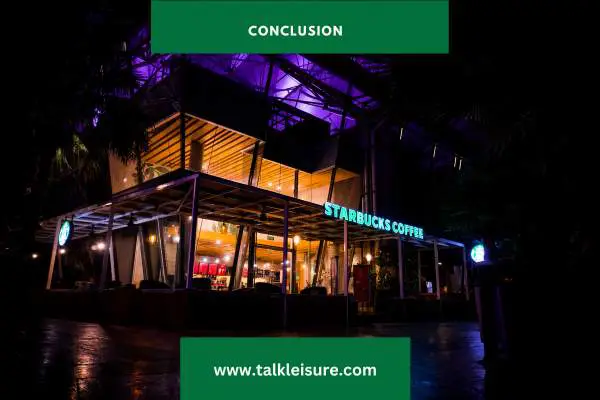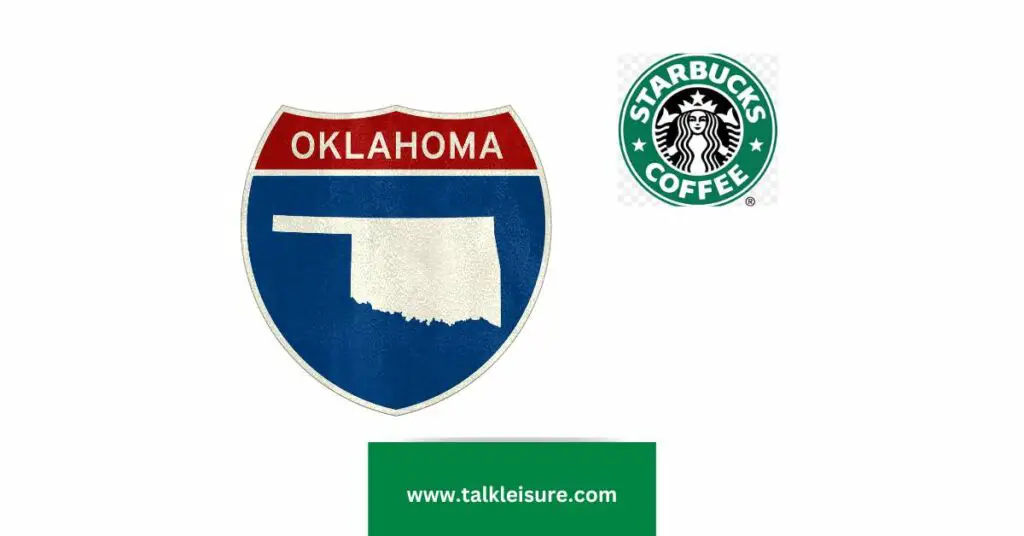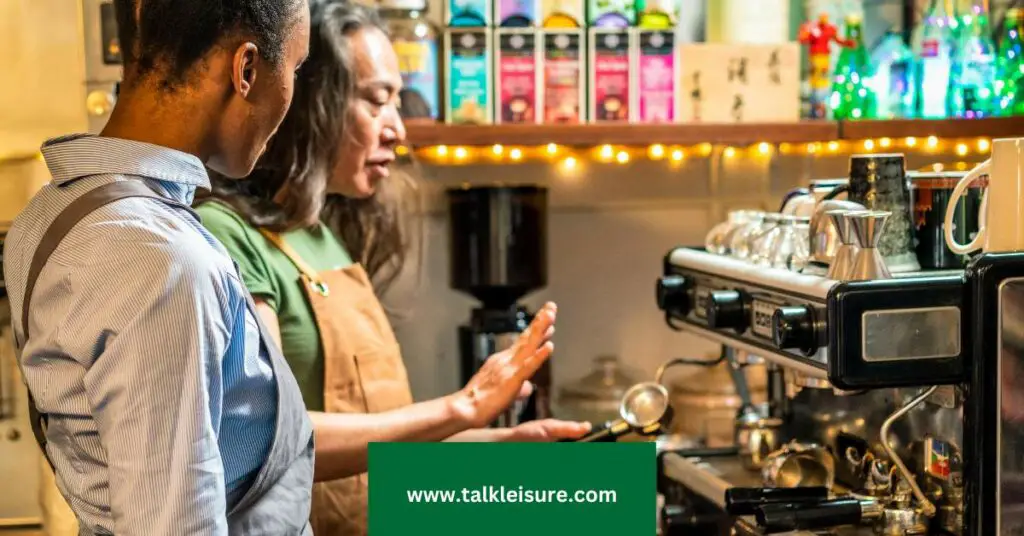Hello there, coffee enthusiasts! If you’ve ever found yourself wondering how long Starbucks barista shifts are, you’re not alone. Whether you’re a regular customer or someone interested in pursuing a career as a barista, understanding the typical shift length is important information to have.
After all, the amount of time a barista spends on the job can impact their work-life balance, schedule flexibility, and overall job satisfaction.
By the end of this article, you’ll have a better understanding of the different factors that can influence the length of a barista shift at Starbucks, and what to expect if you’re interested in pursuing a career as a barista. So, let’s dive in and explore the world of Starbucks barista shifts!
What Are Typical Shift Lengths for Starbucks Baristas? Understanding Starbucks Shift Hours

The typical shift length for Starbucks baristas can vary depending on several factors, such as the specific store location, the time of day, and the needs of the business.
However, in general, most shifts tend to fall within the range of 4–8 hours.
At many Starbucks locations, the most common shift length for baristas is 6 hours.
This allows for adequate time to complete important tasks, such as preparing drinks, stocking supplies, and cleaning the store, while also ensuring that the barista doesn’t become overworked or fatigued.
Some stores may offer shorter shifts of 4 hours, which can be a good option for baristas who are looking for a more flexible schedule or who are still in school.
Longer shifts of 8 hours may also be available at some stores, particularly during busy times like weekends or holidays.
It’s worth noting that Starbucks has implemented several policies to help ensure that baristas don’t become overworked or burned out.
For example, the company has a “rest and recovery” policy that requires baristas to take at least 10 minutes of paid time off for every four hours worked.
Additionally, baristas are not typically scheduled for more than 40 hours per week unless they have requested or agreed to work overtime.
Overall, while the exact shift length may vary from store to store, most Starbucks baristas can expect to work shifts that are between 4 and 8 hours in length.
Factors That Can Impact the Length of a Barista’s Shift at Starbucks

Store Location
The location of the store can play a role in determining the length of a barista’s shift. Stores that are located in high-traffic areas may require longer shifts to accommodate the higher volume of customers, while quieter locations may have shorter shifts.
Time of Day
The time of day can also impact the length of a barista’s shift. For example, morning shifts may start earlier and be shorter in duration, while evening shifts may start later and be longer.
Staff Availability
The availability of other staff members can also impact the length of a barista’s shift. If a store is short-staffed, baristas may be asked to work longer shifts to ensure that the store is adequately staffed.
Business Needs
The needs of the business can also impact the length of a barista’s shift. For example, if a store is experiencing high demand during a particular time of day, baristas may be asked to work longer shifts to help meet the needs of customers.
Employee Preferences
Finally, employee preferences can also play a role in determining the length of a barista’s shift. For example, if a barista prefers shorter shifts, they may be scheduled for shifts that are closer to 4 hours in length.
On the other hand, if a barista prefers longer shifts, they may be scheduled for shifts that are closer to 8 hours in length.
Overall, the length of a Starbucks barista’s shift can be influenced by a variety of factors, including store location, time of day, staff availability, business needs, and employee preferences.
By taking these factors into account, Starbucks can create schedules that help ensure that the store is adequately staffed while also meeting the needs and preferences of its employees.
Benefits and Drawbacks of Working a Longer or Shorter Shift: Insights into a Typical Starbucks Shift

There are both benefits and drawbacks to working longer or shorter shifts as a Starbucks barista.
Here are a few potential advantages and disadvantages of each:
Benefits of working a longer shift
Fewer shifts: By working longer shifts, baristas may be able to work fewer shifts overall, which can be beneficial if they are looking for a more predictable schedule or if they have other commitments outside of work.
Increased pay: Since longer shifts typically involve working more hours, baristas who work longer shifts may be able to earn more money than those who work shorter shifts.
More time for tasks: Longer shifts can provide baristas with more time to complete important tasks, such as stocking supplies or cleaning the store, which can help ensure that the store runs smoothly and efficiently.
Drawbacks of working a longer shift
Fatigue: Working longer shifts can be tiring, and baristas may find that their energy levels dip towards the end of a shift, which can impact their ability to provide excellent customer service.
Less flexibility: Longer shifts may be less flexible than shorter shifts, as baristas may have less time outside of work to pursue other interests or commitments.
Monotony: Longer shifts can be monotonous, especially if the barista is performing the same tasks for an extended period of time. This can lead to burnout or job dissatisfaction over time.
Benefits of working a shorter shift
More flexibility: Shorter shifts can provide baristas with more flexibility outside of work, as they may have more time to pursue other interests or commitments.
Less fatigue: Shorter shifts may be less tiring than longer shifts, as baristas may have more energy throughout the shift.
Varied tasks: Shorter shifts can be more varied, as baristas may have the opportunity to perform different tasks throughout the day.
Drawbacks of working a shorter shift:
More shifts: Since shorter shifts typically involve working fewer hours, baristas may need to work more shifts overall to earn the same amount of money as they would working longer shifts.
Less time for tasks: Shorter shifts can provide less time for completing important tasks, which can make it more challenging to keep the store running smoothly.
Less pay: Since shorter shifts involve working fewer hours, baristas may earn less money overall than those who work longer shifts.
Overall, the decision to work longer or shorter shifts will depend on the individual barista’s preferences and circumstances.
While longer shifts may provide more pay and fewer shifts overall, they can also be tiring and less flexible.
Conversely, while shorter shifts can provide more flexibility and varied tasks, they may require more shifts overall to earn the same amount of money.
How to Request a Specific Shift Length at Starbucks?

As a Starbucks barista, if you want to request a specific shift length, there are several steps you can take.
First and foremost, it’s essential to talk to your manager and express your desire to work a specific shift length.
This may be for personal or scheduling reasons, and it’s essential to explain your reasons to your manager to help them understand your request better.
Based on the store’s needs and other staff members’ availability, your manager may be able to accommodate your request.
However, it’s important to be flexible and willing to compromise if your manager can’t accommodate your request.
For instance, you can ask your manager if you can work alternate shifts that align with your availability or schedule.
It’s also vital to provide your manager with advanced notice if you need a specific shift length regularly.
For example, if you have other work or school commitments, giving your manager notice in advance will help them plan the store’s schedule accordingly and ensure that there are enough staff members available to cover all shifts.
After you’ve made your request, it’s crucial to follow up with your manager and see if they were able to accommodate it.
If not, you can ask if there are any other options available or if you can revisit the topic at a later date.
Keep in mind that communication is vital throughout this process.
By being clear about your needs, flexible in finding a solution that works for everyone, and providing advanced notice, you can increase your chances of getting the shift length that you want.
The Future of Barista Shifts: Changing Trends and Predictions for Work at Starbucks

The barista profession has been evolving over the years, and there are changing trends and predictions for the future of barista shifts.
One significant trend is increased flexibility. With many baristas working part-time or having other commitments, providing flexible schedules that align with their availability will be essential to retaining and attracting talent.
This may include shifts that are non-traditional, such as evenings and weekends.
Another trend in the future of barista shifts is the increasing prevalence of remote work.
As online ordering and delivery options become more common, baristas may have the opportunity to work from home or other remote locations.
Automation is also becoming more prevalent in the coffee industry.
For example, automated espresso machines are becoming more common in coffee shops, which could reduce the number of baristas needed per shift.
However, this may also result in more specialized roles for baristas, such as coffee roasting and tasting.
In addition, there may be a greater demand for healthier menu options at coffee shops as people become more health-conscious.
This could result in shifts with more emphasis on preparing smoothies, fresh juices, and other health-focused beverages.
Overall, the future of barista shifts is likely to be more flexible, automated, and health-focused.
As the coffee industry continues to evolve, it’s essential for baristas to stay adaptable and keep up with changing trends to remain competitive in the job market.
Real Stories from Starbucks Baristas: A Day in the Life

Starbucks baristas have one of the most fast-paced and demanding jobs in the food service industry.
They are responsible for preparing and serving coffee, tea, and other beverages, as well as providing excellent customer service.
To give you a better idea of what a day in the life of a Starbucks barista is like, here are some real stories from Starbucks baristas:
- “I start my day by setting up the store and getting the coffee brewing. Once the store opens, I take orders and prepare drinks while maintaining a clean and organized workspace. Sometimes we get busy, and there are lines of customers out the door. It can be challenging to keep up, but it’s also exhilarating to know that we’re providing excellent service and making people’s days a little better.”
- “One of the most rewarding parts of being a Starbucks barista is getting to know our regular customers. We have some customers who come in every day, and we know their orders by heart. It’s nice to be able to greet them by name and have a friendly chat while we prepare their drinks.”
- “There’s a lot more to being a Starbucks barista than just making coffee. We have to be knowledgeable about the different types of coffee and tea, as well as the ingredients in our beverages. We also have to be able to handle difficult customers and resolve conflicts. It can be a challenging job, but it’s also very rewarding.”
- “One of the most hectic times of the day is the morning rush. We have a lot of customers coming in before work or school, and it can be overwhelming. But we work together as a team to make sure that everyone gets their drinks as quickly as possible.”
- “At the end of the day, we have to clean and close up the store. This involves cleaning equipment, restocking supplies, and making sure everything is in order for the next day. It’s a lot of work, but it’s also a great feeling to know that we’ve done our job well and provided excellent service to our customers.”
In summary, being a Starbucks barista is a demanding but rewarding job that requires a lot of hard work, knowledge, and customer service skills.
From preparing drinks to resolving conflicts, Starbucks baristas play a vital role in providing an excellent customer experience.
Conclusion

In conclusion, the stories of Starbucks baristas provide a glimpse into the fast-paced and demanding nature of their job.
From the morning rush to closing up the store, they work tirelessly to ensure that customers receive excellent service and delicious beverages.
Despite the challenges, baristas find their work to be rewarding, whether it’s through getting to know regular customers, being part of a supportive team, or simply taking pride in a job well done.
Through their stories, we gain a deeper appreciation for the hard work and dedication that goes into being a Starbucks barista.












